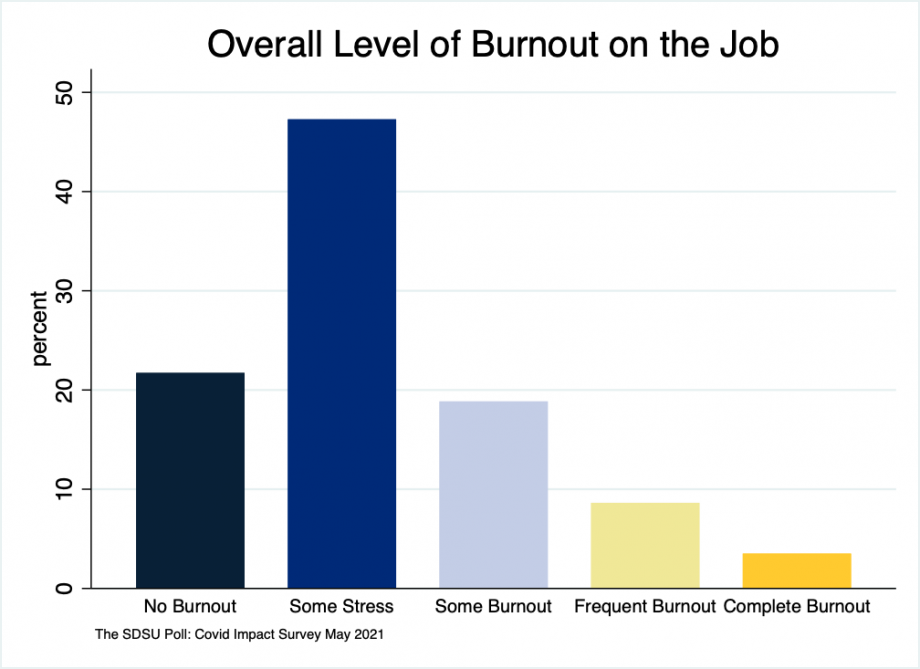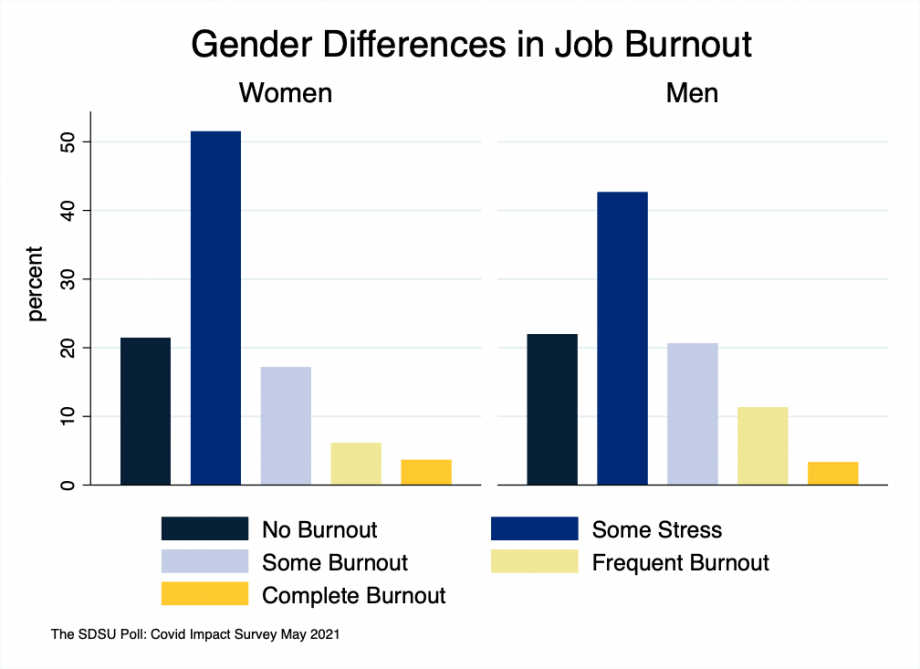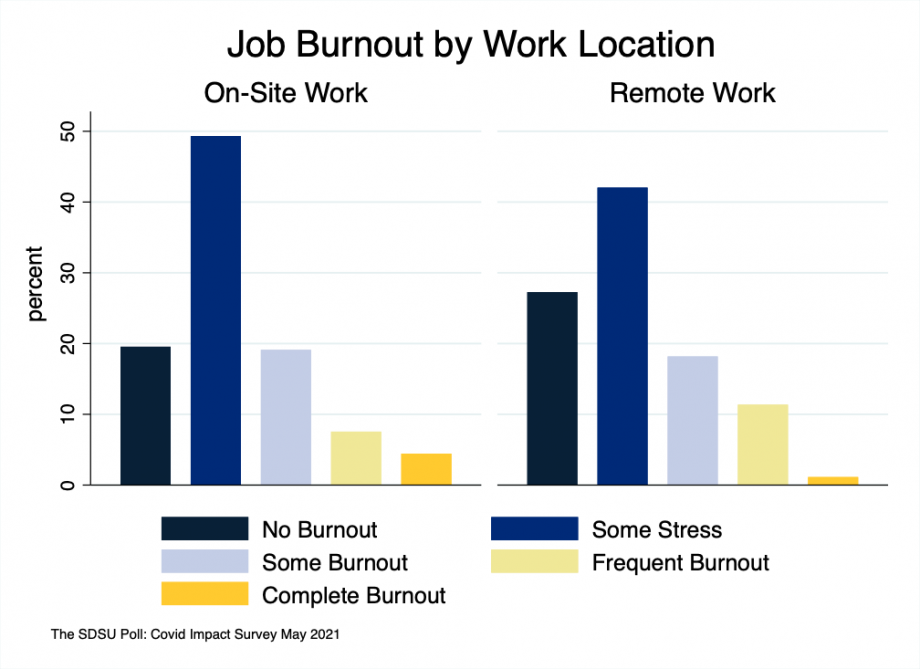The South Dakota COVID-19 Impact Survey May 2021 was conducted from May 14 to 23, 2021 by The South Dakota Polling Project, a research group housed in the School of American and Global Studies at South Dakota State University. Participants from The South Dakota COVID Impact Survey were invited to share their thoughts on the impact of the COVID-19 pandemic on their work-life balance. A total of 324 fully-employed South Dakotans over the age of 55 responded to the invitation and completed the survey. The margin of error of this survey was +/- 4 %, on par with other state-wide polls.
In our previous press release, we discussed the impact of the COVID-19 pandemic on the job satisfaction of older South Dakotans. Today, we will explore to what extent older employees experienced feelings of burnout. The COVID-19 pandemic caused a great amount and variety of stressors, which can weigh heavily on employees and significantly impact their well-being, including the feelings of burnout. The results of our survey show that 32% of older employees in South Dakota experienced burnout to a certain extent during the past year. In particular, 4% felt completely burned out, 9% experienced burnout that wouldn’t go away, and 19% experienced multiple symptoms of burnout. On a more encouraging note, 68% of participants did not report experiencing burnout. 47% reported a degree of stress but no burnout, and 21% reported no symptoms of burnout at all.
The number of participants in our survey who reported some form of burnout—32%—is lower than the national level. This finding might be explained by the fact that our respondents are less likely to have the same childcare responsibilities younger employees face. Additionally, older employees on average already developed the ability to separate work from the rest of their lives, which makes them more immune to burnout.

We observed some differences in the extent to which men and women experienced burnout during the pandemic. Male employees experienced burnout to a greater degree than female employees. Particularly, 35% of men and 24% of women experienced burnout during the last year. This finding is interesting as during the COVID-19 pandemic women in general have experienced symptoms of burnout at up to twice the rate of men, as they are shouldering a much heavier burden of household labor and caregiving during the pandemic. The opposite findings in our research might be attributed to the fact that older women might not have as many caregiving responsibilities, and older men might have more physically demanding jobs than older women.

On the other hand, we did not see a difference in the extent of burnout between employees working at home and employees working on-site. An identical number of 31% respondents in each of the two groups reported burnout during the past year. This finding is also interesting as we expected employees working from home during the pandemic might feel more like “trapped at home,” and experience more stress and burnout. However, our findings indicate that location of the work is not an important factor as burnout perceptions among older employees who are more capable at buffering work stress and burnout.

So far, we have explored the impact of COVID-19 pandemic on job satisfaction as well as feelings of burnout among older employees in South Dakota. In the final press release, we will turn to the impact of the pandemic on how they managed relationships with family members during the pandemic.
Contributors: Filip Viskupic PhD, Alper Kaayalp PhD & David Wiltse PhD
- Contact:
- Telephone number: 605-688-6795
Republishing
You may republish SDSU News Center articles for free, online or in print. Questions? Contact us at sdsu.news@sdstate.edu or 605-688-6161.

